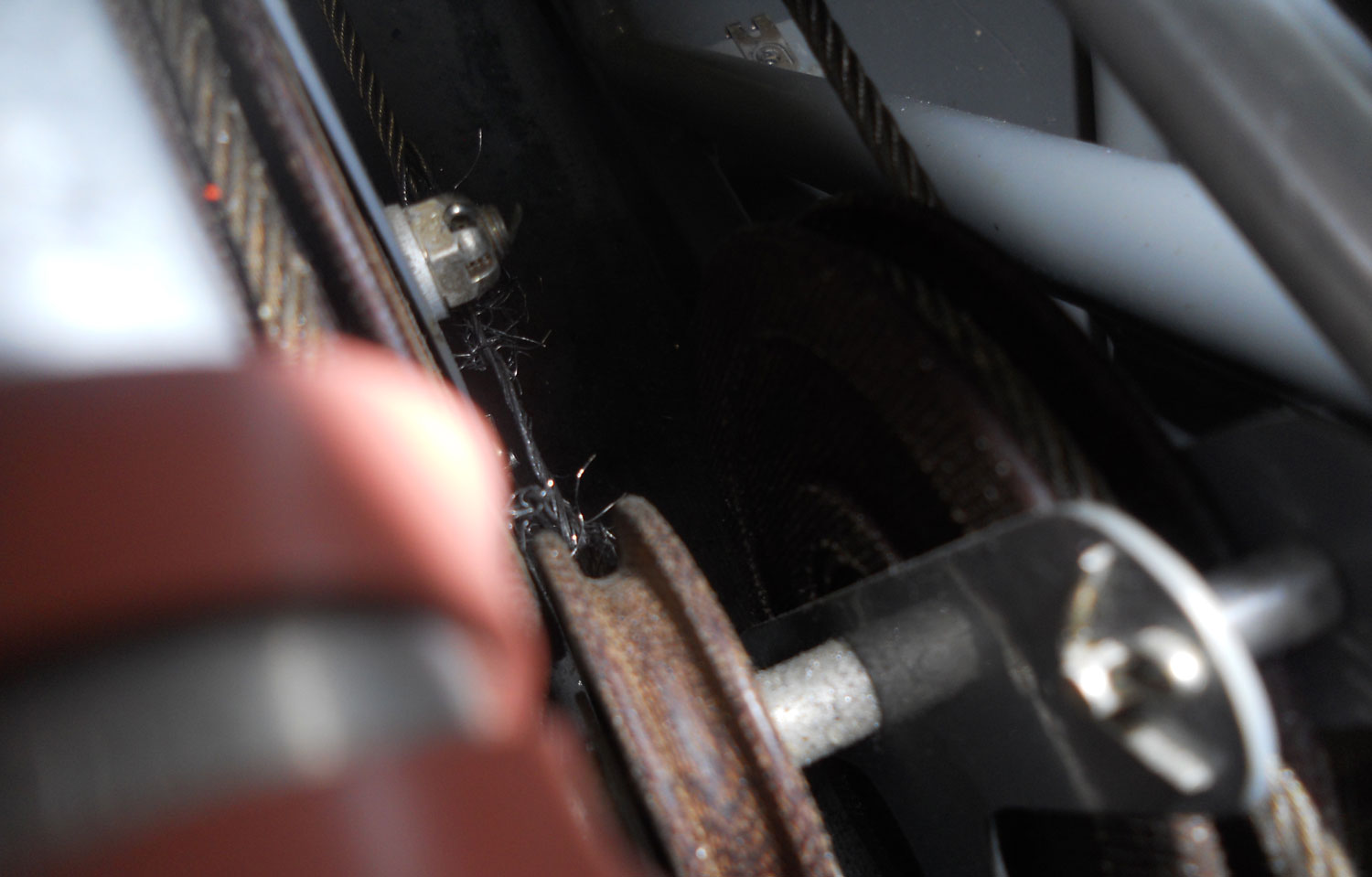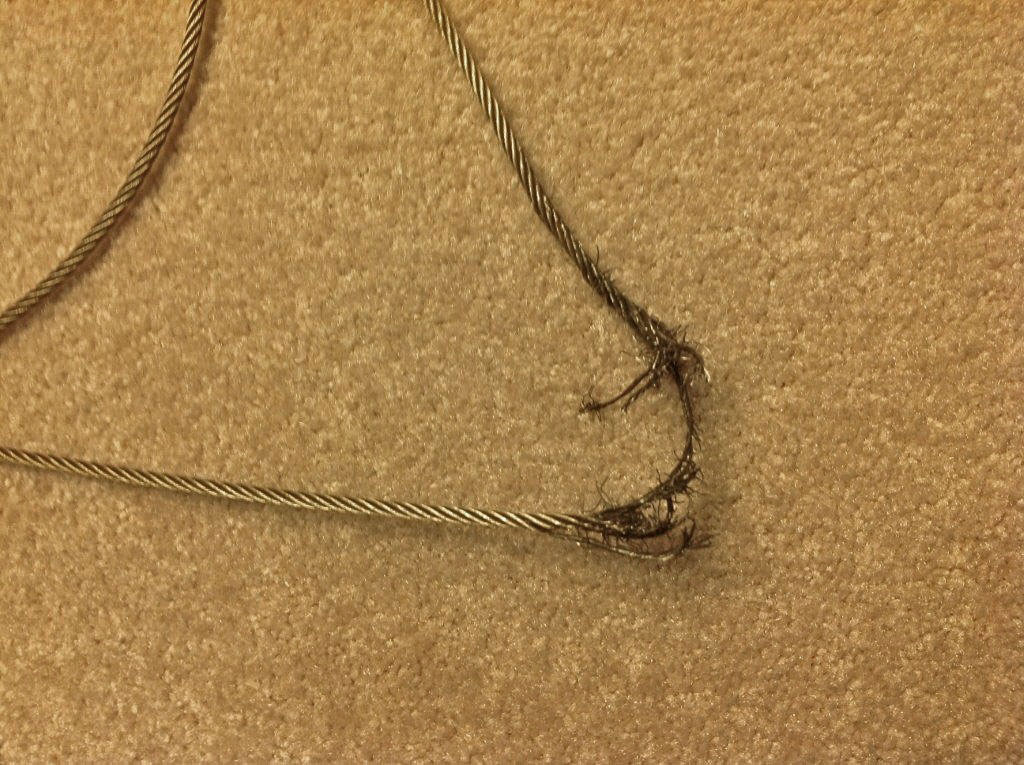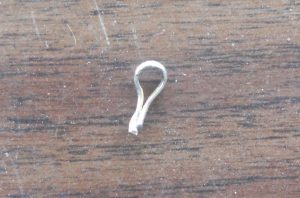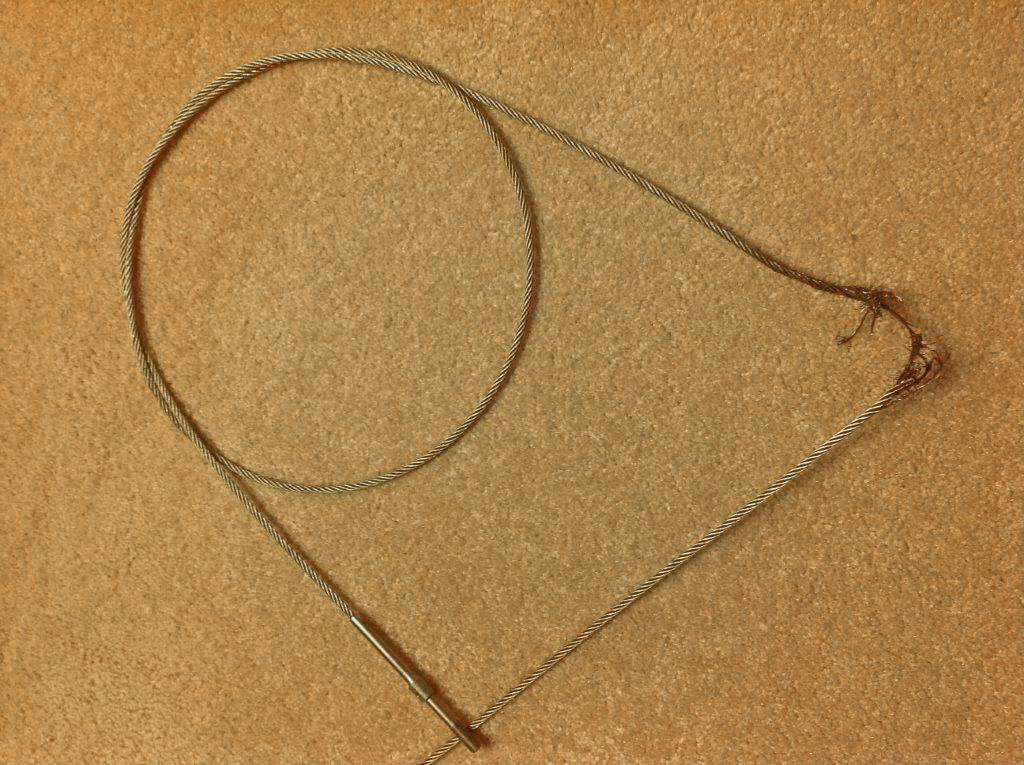
During my first annual condition inspection at about 100 hours, I had quite a surprise; the forward rudder cable had gotten caught on the cotter pin that holds the castle nut on the bolt that secures the elevator reversing pulley. When installed, the rudder cable runs along the side and just below (about ½-inch) the nut/ cotter pin installation. For the record, the cable and everything else was (still is) fabricated and installed according to the manual.
The problem is that the cable runs so close to the castle nut/cotter pin and the cotter pin is in such a tight location that it is very difficult or impossible to get the cotter pin bent so that it is not a safety risk. Therefore, if the rudder cable becomes slack for any reason it could get entangled on the nearby cotter pin and possibly remain hooked and wear through the rudder cable.

In my case, the cable may have gotten caught on the pin when transferring N12YR to the airport on the tow truck. The cable was slack and during loading and unloading and the fuselage was at a high angle of attack. Maybe it was the bouncing during the ride to the airport that caused the cable to catch on the cotter pin. Maybe it was when doing a departure stall or something similar when test flying N12YR.

Anyway, the cable got hooked on the cotter pin and remained there until it was released. The cable was holding by a few fine wires, it slipped off castle nut only after the spread end of the cotter pin had finally worn away.
I ordered a new forward rudder cable from Glasair. The cable has not changed and is still used in the Sportsman as well as the GlaStar. To prevent this from happening again I reversed the bolt holding the elevator reversing pulley in place. Now the bolt head is near the cable and the castle nut/cotter pin is next to my leg, where it cannot do any harm. If needed a plastic cap could be pushed over the exposed castle nut.
What to do
It is a simple fix. I was able to drive the original bolt out while tapping in a replacement bolt from the other side, without disassembling any of the pulley assembly. I recommend you do the same if you have a GlaStar. I looked at the current Sportsman manual and it is not a problem, however early Sportsman may still have the old GlaStar setup. Also, At Oshkosh I talked with a Symphony (looked at his setup) owner and they do not have the problem.
Both the Sportsman and the Symphony have modified the original GlaStar setup to eliminate the problem.
Now the nut/cotter pin is on the other side where it cannot do any harm. I may touch my leg on it but so far it has not been a problem. I think the original placement (direction) was for appearance only, not for any other reason. The bolt head has a lot less profile than the nut/cotter pin has. As a matter of fact there is no way the rudder cable can be harmed by the bolt head.

What saved me was the fact that the cotter pin wore flush with the nut before the cable wore completely through. After the cotter pin wore in half, the rudder cable slipped of the nut and returned to its proper position.
Terry Dovey saw the problem during his build and this is what he had to say.
“Looking at this pulley area just now I recalled that during my build I was concerned about the proximity of the rudder cable to the nut/ cotter pin so what I did was to fit a larger diameter pulley. Solved the problem.”
Don’t take this lightly, check your cable.
Also, reverse the direction of the installed bolt on the reversing pulley so that the nut/ cotter pin is on the pilot side of the tunnel and away from the forward rudder cable.



